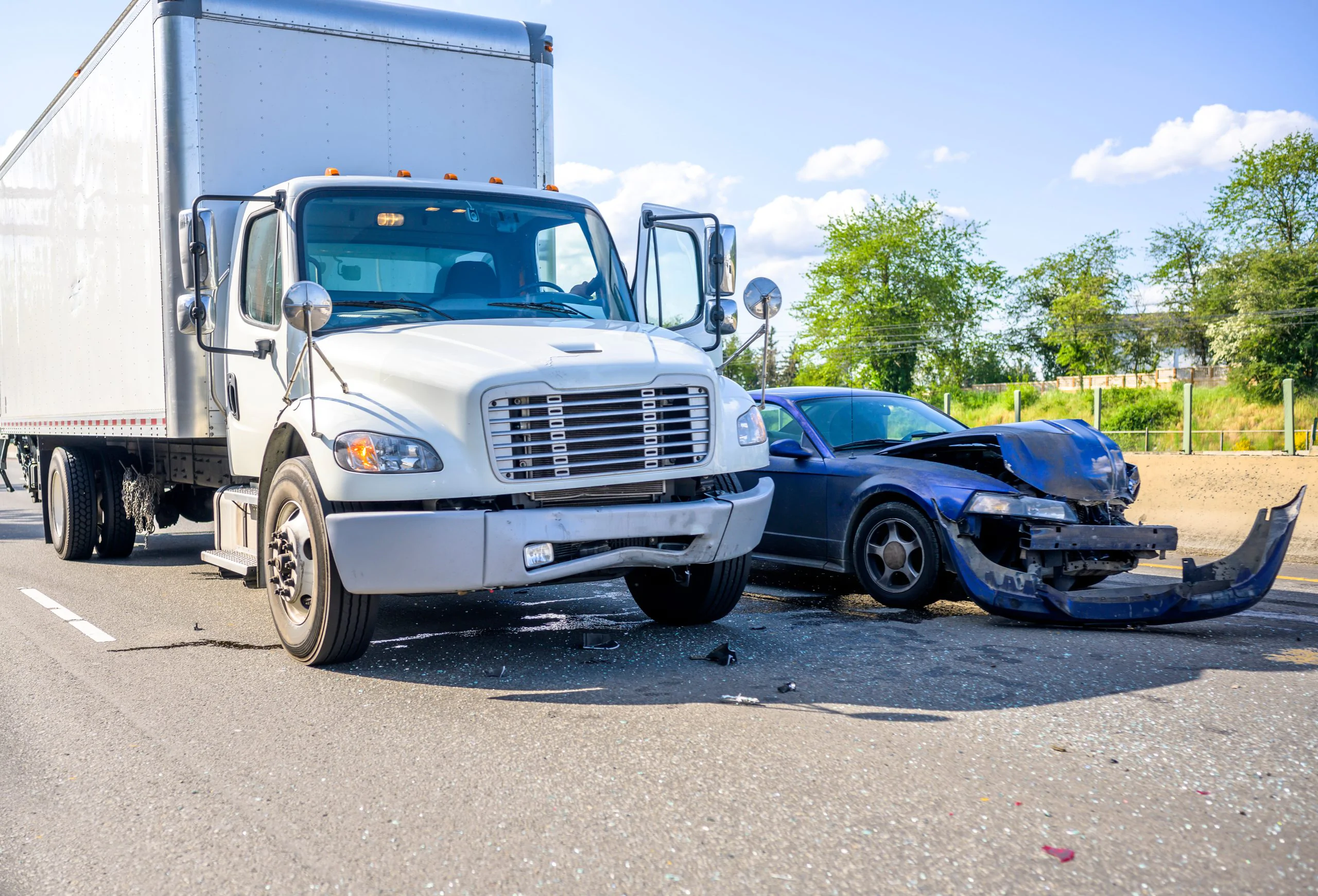Drivers operating large commercial trucks including semis, 18-wheelers and tractor-trailers are often the subjects of negative press. Criticism of 11-hour shifts, use of illegal stimulants, poor rig maintenance and more has been common. The cause for concern is simple: large truck operations pose a serious threat to both drivers as well as the general public.
Truck drivers also have a lot to lose financially any time they are involved in an accident. Serious traffic violations could cost them their Commercial Driver’s Licenses (CDLs), and ultimately, their livelihoods. However, truck operators are not always to blame, and also have the right to sue for negligence if another driver causes a crash, and New York’s no-fault insurance policy is not enough to compensate.
Trucking Fatality Statistics
According to data from the National Highway Traffic Safety Administration (NHTSA), truck-related fatalities amounted to 4,761 in 2017 nationwide, up nine percent from 2016. 115 large trucks from New York were reported to be involved in these accidents, accounting for 2.5 percent of the U.S. total for heavy rigs.
According to the New York Department of Motor Vehicles’ (DMV’s) latest figures, the state saw 11,848 large-truck accidents in 2014, killing 79 and injuring 5,003. Though grim, this death toll was the lowest reported by the DMV in the past 14 years. Most of the drivers killed in these accidents were not big-rig operators, but passenger vehicle occupants. Similarly, fewer truck drivers are injured compared to non-commercial drivers, passengers and pedestrians.
To put these statistics in perspective, there was a 40-percent spike in fatal crashes between 2009 and 2017 for large trucks and buses. Before this, fatal crashes dropped by 34 percent between 2005 and 2009, according the Federal Motor Carrier Safety Administration. However, the 2017 total for truck and bus fatalities is still 7 percent lower than its 21st century peak of 5,231 deaths in 2005.
The 6 Leading Causes of Large-Truck Accidents in the US
- Fatigue: When someone nods off behind the wheel of a tractor-trailer, the consequences can be tragic. Truck driver fatigue has long been at the center of controversy regarding transportation safety protocol. Many claim the 11-hour work shifts (with mandated breaks) allowed by the federal government to be the main contributing factor. Surveys also show that it is common for drivers to keep driving past this limit, as they are financially incentivized to finish their jobs earlier by covering more ground faster.
- Drug use: A safety problem often connected to fatigue is illicit drug use, including stimulants able to keep drivers awake on long hauls. During a 2019 congressional hearing, the Alliance for Driver Safety & Security called drug use the greatest safety issue facing the trucking industry, and cited a recent study revealing a higher rate of use than suspected. The study showed that urinalysis required by the U.S. Department of Transportation failed to detect nine out of every ten cases of illegal drug use later discovered through hair analysis.
- Poor maintenance: Another common cause of large commercial truck accidents is unreliable braking capacity due to neglected equipment. It takes a loaded tractor-trailer 20 to 40 times longer to stop than a car. This is a problem that only gets worse on wet and slippery roadways, and with worn brakes or tires.
- Unbalanced load: A semi-truck can jack-knife or become hard to handle if the cargo is loaded improperly. This is a common issue caused by packers who are inexperienced in proper weight distribution.
- Wandering eyes: Distracted driving is especially dangerous among tractor-trailer operators. To limit distractions, truck drivers have been banned from talking on cell phones. However, this hasn’t stopped all truck drivers from using their phones while driving. Others have been reported trying to pass long hours on the road in other ways, from watching television on portable devices, to getting distracted by the radio.
- Underriding: Statistics show that passenger vehicle occupants are the most likely to die in a truck crash. Not only do big rigs weigh 20 to 30 times more than a passenger car, but they also have greater ground clearance. This distance from the ground can create a death trap for passenger vehicles. When a vehicle gets trapped in this space, it is known as under-riding, which is capable of shearing the roof off a car, or tearing it apart entirely.
Of course, truck drivers are not always responsible for accidents. In fact, the NTSA reports that in two-vehicle fatal crashes involving large trucks in 2017, commercial trucks were struck in the rear three times more often than passenger vehicles. In fatal accidents that year, large-truck drivers were also less likely to have a suspended or revoked license than the passenger-vehicle drivers involved in such crashes. What’s more, only three percent of these big rig operators had a BAC of .08, compared to 21 percent for non-truck drivers.
What to Do After a Semi-Truck Accident
Travelers, an insurer for large commercial trucks, suggests that companies provide step-by-step instructions for handling the aftermath of a trucking accident, along with a list of 24-hour emergency contacts.
Travelers also cautions that even when a crash seems minor, appearances can be deceiving. After making sure everyone gets the medical attention they need, collect the names and contact info for all witnesses, drivers and passengers available at the scene.
Commercial drivers should also have a camera to photograph the scene from various angles. If legal action is sought by the truck driver or by another party, the information and pictures collected could prove valuable down the road.
Determining fault of the accident is not the driver’s responsibility. The New York State Police has a Commercial Vehicle Enforcement Unit trained to assist law-enforcement whenever a truck is involved in a crash. All details included from the initial investigation of the accident report are taken seriously in court, so it is often best not to assume blame during any roadside discussion.
Commercial truck operators should also know that fines tend to be heavier for CDL holders, and that they will likely be asked to take a drug/alcohol test to prove sobriety immediately following an accident—even if they did nothing wrong.
With New York’s no-fault insurance, it isn’t necessary to establish blame for an accident until the cost of resulting damages exceed fixed amounts. But if there are high medical costs involved, or if a truck driver’s job is at stake, consulting with a semi-truck accident lawyer will likely be the best course of action towards building a strong legal case.
Insurance Policy Coverage for Commercial Drivers
In most cases, under the legal premise known as “vicarious liability,” trucking employers are liable for negligent actions or non-actions caused by their employees, including truck drivers. Because of this, it is recommended before taking on any transportation job that applicants ask if the hiring company has a policy that extends collision coverage to employees.
However, if a commercial truck is used for anything other than work (ie. to help a friend move furniture) and the employer does not consent, then the driver will likely face legal consequences in the event of an accident.
Consequences of Losing a Commercial Driver’s License (CDL)
There are specific rules a commercial truck driver must follow in the aftermath of a crash to avoid losing his or her CDL. A truck driver in New York can lose their license for at least one year if they leave the scene of an accident without reporting it. If investigators call for alcohol testing, refusal can carry the same consequence. A one-year severance from the job is also possible for having a blood alcohol concentration (BAC) of .04 percent of more while operating a big rig, according to the DMV.
Any time a truck driver loses their license or is disqualified from hauling, New York law requires that they notify their employer. If an employer decides to keep a disqualified driver on the road without a proper license, the employer also faces penalties including a fine up to $5,000 and possible jail time. Even if the law allows drivers to return to the road eventually, their employer may want to cut ties for legal and reputation purposes.
Legal Protections for Semi-Truck Drivers
Many trucking accidents could be prevented if drivers would speak up about faulty equipment and other issues. There are legal protections in place to help truck operators do this without risking their jobs. These include the Surface Transportation Assistance Act from the Occupational Safety and Health Administration (OSHA), which allows truck drivers to make a complaint as an anonymous whistleblower, instead of reporting directly to their employer.
This can also protect truck drivers after an accident, especially if an employer is at least somewhat responsible for an accident, perhaps through allowing the use of faulty equipment. Yet another protection comes from the Federal Motor Carrier Safety Administration, which will take any complaint from a driver being coerced into dangerous practices.
Contact a Commercial Vehicle Accident Attorney
If you or someone you know was injured in a large-truck accident, you may want to consider consulting with a commercial vehicle accident attorney. The right attorney can help you win a settlement that helps cover all damages related to your crash, as well as any lost wages from time spent away from work.
The lawyers at Sobo & Sobo have helped clients throughout the Hudson Valley, the Bronx and Manhattan win semi truck lawsuits for commercial and passenger vehicle occupants for over 50 years. Call 855-468-7626 for a free consultation today, and ask them how they can help you protect your career, while getting you the compensation and justice you deserve.




